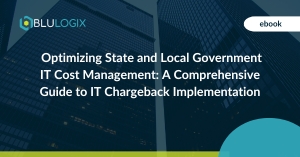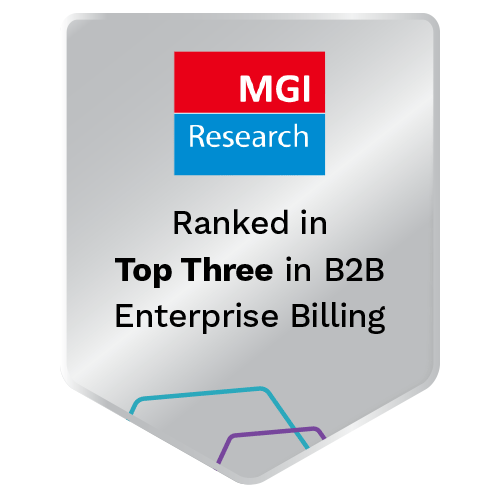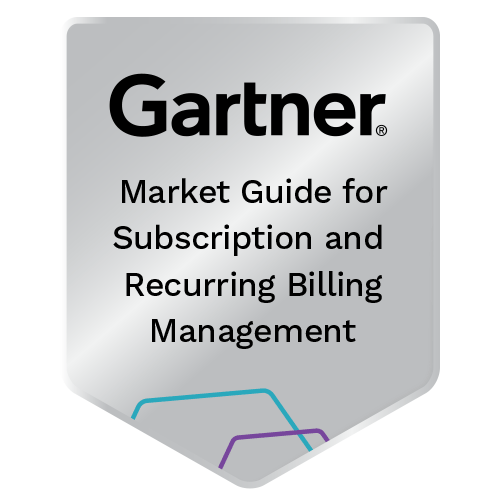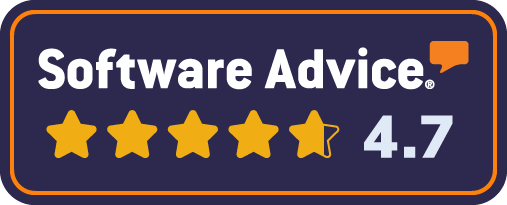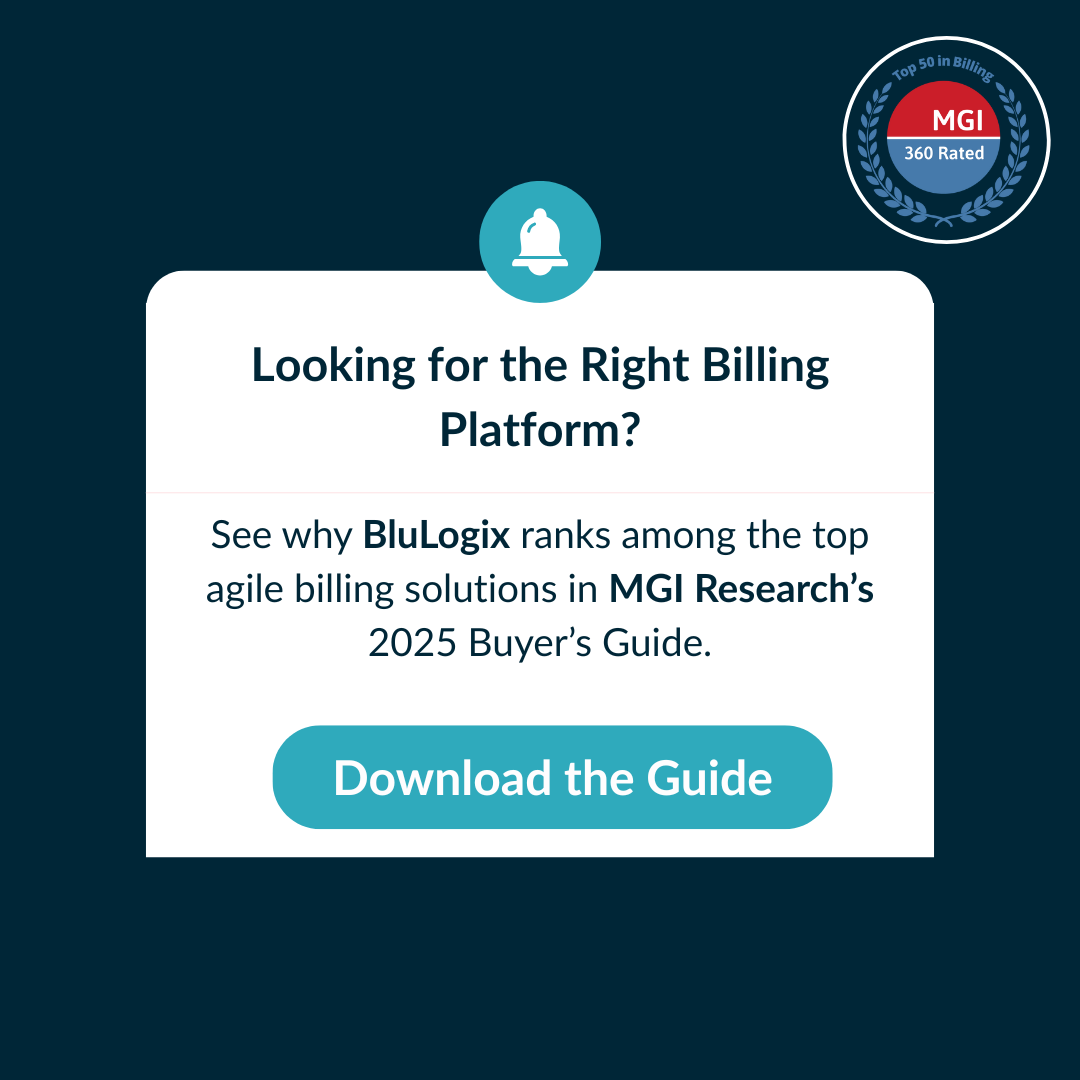Blulogix Whitepaper
Optimizing State and Local Government IT Cost Management: A Comprehensive Guide to IT Chargeback Implementation
Table of Contents
State and local governments face unique challenges when it comes to managing IT costs efficiently while delivering critical services to citizens. To enhance financial transparency, resource optimization, and accountability, IT Chargeback has emerged as a powerful financial management approach for the public sector This whitepaper provides a comprehensive guide to implementing IT Chargeback within state and local government agencies, exploring its benefits, best practices, and steps for successful integration. By adopting IT Chargeback, governments can achieve better cost visibility, informed decision-making, and a culture of fiscal responsibility, ultimately ensuring the effective use of taxpayer dollars.
The Mission for Public Sector Shared Services Organizations
In the public sector managing IT costs efficiently while delivering essential services is of paramount importance. By implementing IT Chargeback state and local governments can achieve financial transparency, optimized resource utilization, and informed decision-making. IT Chargeback promotes fiscal responsibility and empowers agencies to align IT investments with government objectives, ensuring the effective use of taxpayer dollars. By following the steps outlined in this whitepaper and learning from real-life success stories, government agencies can unlock the benefits of IT Chargeback and pave the way for cost optimization and accountability in their IT operations.
The Importance of IT Cost Management for State and Local Governments
In the ever-evolving landscape of state and local governments, information technology (IT) plays a vital role in driving public service delivery, enhancing citizen engagement, and ensuring the efficient functioning of government agencies. As governments increasingly rely on technology to meet the needs of their constituents, managing IT costs effectively becomes a critical challenge. State and local governments must strike a delicate balance between providing high-quality services to citizens and optimizing the use of limited financial resources.
The Importance for IT Cost Management for Public Sector Shared Services Organizations
Financial Constraints and Budget Pressures:
State and local governments often face financial constraints and budget pressures. Balancing the demands of essential services with limited funds requires a thorough understanding of IT costs and resource allocation.
Citizen Expectations and Service Demands:
In today’s digital age, citizens expect efficient and accessible government services. IT plays a central role in meeting these expectations, necessitating a well-managed and cost-efficient IT infrastructure.
Fiscal Responsibility and Accountability:
As stewards of public funds, governments are held to a high standard of fiscal responsibility. Transparent and accountable management of IT costs is essential to gain public trust and ensure the effective use of taxpayer dollars.
Optimization of IT Investments:
Effective IT cost management enables state and local governments to optimize their IT investments, ensuring that resources are strategically allocated to initiatives that align with government objectives.
Alignment with Government Priorities:
By understanding the true cost of IT services, governments can ensure that IT investments align with their broader policy objectives, enhancing overall governance and service delivery.
Introducing IT Chargeback
IT Chargeback has emerged as a transformative financial management approach for state and local governments, addressing the challenges of traditional IT budgeting methods. Unlike traditional approaches that often rely on fixed cost allocations or arbitrary distribution methods, IT Chargeback directly links IT costs to the departments or users responsible for consuming IT services. This direct cost attribution empowers government agencies to gain a granular understanding of IT expenses, ensuring that each department or user is accountable for the resources they utilize.
This whitepaper provides provide state and local government IT leaders, finance professionals, and policymakers with an introduction to implementing IT Chargeback.
The purpose of this whitepaper is to provide state and local government IT leaders, finance professionals, and policymakers with a comprehensive guide to implementing IT Chargeback. It aims to help government agencies achieve better cost visibility, informed decision-making, and a culture of fiscal responsibility through IT Chargeback integration. This whitepaper will explore the benefits of IT Chargeback for state and local governments, delve into the best practices for its implementation, and offer real-life case studies to illustrate its successful application in the public sector. By adopting IT Chargeback, state and local governments can enhance financial transparency, optimize resource utilization, and drive effective IT cost management to better serve their citizens and communities.
Understanding IT Chargeback
What is IT Chargeback for State and Local Governments?
IT Chargeback is a financial management model that treats IT departments within state and local governments as internal service providers, charging the costs of IT services directly to the departments or business units that utilize them. This approach goes beyond traditional IT budgeting methods, such as fixed cost allocations or centralized funding, and provides a more accurate representation of the actual expenses incurred by each department based on their IT usage.
In the context of state and local governments, IT Chargeback allows agencies to recover the costs associated with providing IT services from the departments or programs that benefit from them. It enables governments to view IT as a value-adding function that directly supports the missions and objectives of various departments, ensuring that the costs are distributed in a fair and transparent manner.
Key Principles and Objectives for Public Sector IT Chargeback
The implementation of IT Chargeback in state and local governments is guided by several key principles and objectives:
Direct Cost Attribution: IT Chargeback attributes costs directly to the departments or users consuming IT resources. By doing so, it ensures that each department pays only for the services they use, leading to a fair distribution of IT costs.
Transparent Cost Allocation: IT Chargeback promotes cost transparency by providing clear visibility into IT expenses at the departmental or user level. This transparency fosters a sense of accountability and allows government agencies to make informed decisions about their IT investments.
Incentivizing Cost-Conscious Behavior: By revealing the financial impact of IT usage, IT Chargeback encourages departments and users to become more conscious of their resource consumption. This promotes cost-conscious behavior, leading to improved resource efficiency and cost optimization.
Resource Optimization: IT Chargeback enables government agencies to identify opportunities for resource optimization and cost reduction. By understanding which departments or users consume the most resources, IT leaders can make data-driven decisions to optimize resource allocation and enhance service delivery.
Business Alignment: With accurate cost data and granular visibility into IT expenses, IT Chargeback empowers state and local governments to align their IT initiatives with government objectives. Data-driven decision-making ensures that IT investments are strategically aligned with overall governance and service delivery.
Comparison with Traditional IT Financial Management for Governments
Traditional IT financial management in state and local governments often relies on methods such as fixed cost allocations or centralized funding. These approaches might not accurately reflect the actual consumption of IT services by individual departments or users. As a result, some departments may be subsidizing the IT costs of others, leading to inequitable distribution and potentially wasteful resource utilization.
In contrast, IT Chargeback provides a more accurate representation of IT expenses by attributing costs based on actual resource consumption. This approach ensures that each department or user bears the financial responsibility for the services they use, leading to better cost visibility and resource optimization.
Moreover, IT Chargeback enables state and local governments to treat IT as a service-oriented function, encouraging a culture of fiscal responsibility and accountability. It empowers agencies to make informed decisions about IT investments and align IT services with government priorities, ultimately enhancing public service delivery and citizen satisfaction.
Benefits of IT Chargeback for State and Local Governments
Enhanced Financial Transparency and Accountability
One of the primary benefits of implementing IT Chargeback in state and local governments is the enhanced financial transparency it provides. By directly attributing IT costs to the departments or users consuming the services, government agencies gain a clear and detailed view of IT expenses at the granular level. This transparency fosters a culture of fiscal responsibility and accountability, as departments become aware of the financial impact of their IT usage.
With transparent cost allocation, agencies can identify areas of potential overspending and implement measures to optimize resource utilization. Additionally, transparent financial data allows policymakers and stakeholders to gain insight into the IT spending patterns, facilitating informed decision-making regarding budget allocation and resource planning.
Accurate Cost Allocation and Direct Cost Attribution
IT Chargeback ensures accurate cost allocation based on actual resource consumption. Each department or user is charged only for the IT services they utilize, preventing cross-subsidization and ensuring a fair distribution of IT costs. This direct cost attribution eliminates the challenges associated with fixed cost allocations, where departments might over or underutilize IT resources, resulting in inefficiencies and budgetary discrepancies.
By accurately attributing costs, IT Chargeback enables government agencies to make data-driven decisions and allocate resources strategically. It empowers policymakers to identify areas with high IT demand and allocate budgets accordingly, leading to more efficient and targeted investments.
Promoting Fiscal Responsibility and Cost-Conscious Behavior
IT Chargeback encourages fiscal responsibility among government agencies and departments. By linking IT costs directly to resource consumption, departments become more aware of their financial impact, leading to cost-conscious behavior. The understanding that IT resources have a tangible cost incentivizes users to optimize their resource utilization, avoid wasteful practices, and prioritize cost-effective solutions.
Furthermore, promoting fiscal responsibility within government agencies enhances public trust in the efficient use of taxpayer funds. IT Chargeback fosters a culture where departments proactively seek cost-efficient IT solutions without compromising the quality and effectiveness of services provided to citizens.
Optimizing IT Resource Utilization for Efficient Public Service Delivery
Through IT Chargeback, government agencies gain valuable insights into resource utilization patterns across different departments and users. This data-driven approach allows IT leaders to identify areas of excess or underutilization, leading to more efficient resource allocation. By optimizing IT resource utilization, state and local governments can streamline operations, reduce unnecessary costs, and improve overall service delivery.
Moreover, IT Chargeback facilitates a better understanding of the actual demand for IT services, enabling IT teams to proactively plan for capacity upgrades and technology enhancements. This proactive approach minimizes service disruptions and ensures that IT resources are aligned with the ever-changing needs of government operations.
Aligning IT Investments with Government Objectives
IT Chargeback supports the alignment of IT investments with government objectives and priorities. By providing granular visibility into IT expenses, agencies can assess the financial implications of IT projects and initiatives. This data-driven decision-making process ensures that IT investments are strategically aligned with broader governance goals, such as improving public service delivery, enhancing cybersecurity measures, and promoting digital transformation.
Through this alignment, IT Chargeback enables state and local governments to prioritize projects that deliver the highest value and impact on public welfare. Additionally, the clear linkage between IT spending and government objectives enables agencies to demonstrate the value of IT investments to policymakers, stakeholders, and the public.
In the following sections, we will explore the crucial steps involved in preparing for and implementing IT Chargeback within state and local government agencies. These steps will help government IT leaders navigate the challenges of IT Chargeback adoption and maximize the benefits it offers for efficient IT cost management.
Preparing for IT Chargeback Implementation
Before embarking on the implementation of IT Chargeback in state and local government agencies, thorough preparation is essential to ensure its successful adoption and integration. This section outlines the key steps that government IT leaders, finance professionals, and policymakers should consider when preparing for IT Chargeback implementation.
Define Chargeable IT Services and Cost Metrics
The first step in preparing for IT Chargeback implementation is to identify and define the IT services that will be chargeable to departments or users. Work closely with department heads, IT managers, and other stakeholders to understand their specific IT service needs and usage patterns. Categorize IT services based on their nature and consumption models, such as software licenses, infrastructure services, or end-user support.
Once the chargeable IT services are identified, establish clear and consistent cost metrics for each service. The cost metrics should consider both direct and indirect costs, such as hardware, software licenses, maintenance, personnel, and other associated expenses. Developing a comprehensive cost model ensures that the charges are accurate, fair, and reflective of the actual resources consumed by each department.
Data Integration and Collection Mechanisms for Government IT Chargeback
Accurate and timely data collection is critical for successful IT Chargeback implementation. Establish data integration mechanisms to gather data from various IT systems, including asset management, service management, and financial systems. Collaborate with IT teams to ensure that data is collected in a standardized format and is readily available for cost allocation and reporting purposes.
Automating data collection processes, where possible, can streamline IT Chargeback operations and minimize the risk of data inaccuracies. Explore the integration capabilities of IT management tools and financial software to facilitate seamless data flows.
Gaining Stakeholder Buy-In and Building a Communication Plan
IT Chargeback implementation requires collaboration and support from various stakeholders, including department heads, finance teams, and IT personnel. Clearly communicate the objectives and benefits of IT Chargeback to gain stakeholder buy-in and address any potential concerns or reservations.
Develop a comprehensive communication plan to keep stakeholders informed throughout the implementation process. Regular updates, workshops, and presentations can foster a shared understanding of IT Chargeback’s importance and potential impact on government operations.
Crafting an IT Chargeback Model for Public Sector Agencies
Designing an effective IT Chargeback model is crucial for equitable cost allocation and efficient resource management. The model should take into account the unique needs and characteristics of state and local government agencies. Consider factors such as agency size, service demand, organizational structure, and service levels when designing the model.
Explore different chargeback methods, such as user-based, volume-based, or activity-based, to identify the most suitable approach for your government agency. A well-crafted IT Chargeback model should strike a balance between simplicity, fairness, and cost-effectiveness.
Implementing IT Chargeback in State and Local Governments
After thorough preparation, the successful implementation of IT Chargeback within state and local government agencies is the next critical phase. This section outlines the key steps involved in implementing IT Chargeback, ensuring a smooth rollout and effective utilization of this financial management approach.
Pilot Program and Testing for Government IT Chargeback
Before a full-scale rollout, consider conducting a pilot program of IT Chargeback in a select number of departments or agencies. The pilot program allows for testing the IT Chargeback model, validating the accuracy of cost allocation, and identifying any potential challenges.
During the pilot phase, solicit feedback from the participating departments and users to understand their experiences and perceptions of IT Chargeback. Use this feedback to refine the IT Chargeback model, address any concerns, and ensure the readiness of the system for a broader implementation.
Full-Scale Rollout and Monitoring for Fiscal Accountability
Once the pilot program is successful, proceed with the full-scale rollout of IT Chargeback across all relevant government departments and users. This step involves deploying the IT Chargeback model, setting up the necessary data integration processes, and initiating regular cost allocation.
As IT Chargeback becomes operational, establish a robust monitoring and reporting system to track cost allocations and service consumption. Regularly review and analyze cost data to identify trends, potential inefficiencies, and areas for cost optimization. Use the insights gained from the monitoring process to make data-driven decisions regarding IT investments and resource allocation.
Training and Change Management in the Public Sector
For a smooth adoption of IT Chargeback, provide comprehensive training to all stakeholders involved in the process. Training sessions should cover how the IT Chargeback model works, how to interpret cost reports, and the benefits of the new financial management approach.
Additionally, implement change management strategies to address any resistance to the new approach. Communicate the positive impact of IT Chargeback on government operations, service delivery, and fiscal responsibility. Engage with employees and leaders to ensure their understanding of IT Chargeback’s benefits and encourage their active participation in optimizing resource usage.
Addressing Unique Challenges and Fine-Tuning for Government Agencies
State and local government agencies may encounter unique challenges during the IT Chargeback implementation process. These challenges could include organizational culture, resistance to change, or concerns about data accuracy. Address these challenges promptly by maintaining open communication channels, seeking feedback from stakeholders, and making adjustments as needed.
Fine-tune the IT Chargeback model based on lessons learned and feedback from the pilot program and initial implementation phases. Continuously evaluate the effectiveness of the model and make necessary modifications to ensure its relevance and efficiency over time.
Driving Cost Optimization and Efficiency in State and Local Governments
One of the primary objectives of implementing IT Chargeback in state and local governments is to drive cost optimization and efficiency in IT operations. This section delves into the strategies and approaches that government agencies can adopt to leverage IT Chargeback effectively for maximizing the value of IT investments and delivering quality public services.
Encouraging Departments to Optimize IT Resource Usage
With IT Chargeback in place, departments become more aware of the direct costs associated with their IT services and resource consumption. This heightened transparency fosters a sense of financial accountability among departments, encouraging them to seek opportunities for cost optimization.
Government IT leaders can collaborate with department heads to review cost reports regularly and identify areas where IT resources may be underutilized or overutilized. For example, if certain departments consistently consume more cloud computing resources than necessary, the IT Chargeback data can prompt discussions on rightsizing cloud deployments and adopting more cost-effective service plans.
By promoting a culture of resource optimization, IT Chargeback empowers departments to make data-driven decisions that align with their operational needs while minimizing unnecessary costs. This optimization, in turn, leads to better IT budget management and overall fiscal efficiency.
0Identifying Opportunities for Cost Savings in the Public Sector
IT Chargeback data can be a valuable tool for identifying opportunities for cost savings across government agencies. Analyzing the cost allocation data can reveal patterns and trends that indicate potential areas of inefficiency or excess spending.
For instance, by comparing the IT costs of similar services across different departments, IT leaders may identify opportunities for consolidation or shared services. This approach can lead to economies of scale and reduced duplication of resources, resulting in substantial cost savings for the government as a whole.
Additionally, IT Chargeback data can support evidence-based decision-making during procurement and vendor negotiations. Armed with accurate cost information, government agencies can negotiate better contracts with IT service providers and ensure that the costs of services align with market rates and competitive benchmarks.
Leveraging IT Chargeback Insights for Strategic Planning
IT Chargeback generates valuable insights into IT service consumption and costs, providing government IT leaders with a data-driven foundation for strategic planning. The granular visibility into IT expenses helps prioritize IT investments based on their impact on government objectives and citizen needs.
With IT Chargeback data at their disposal, government agencies can develop long-term IT roadmaps and investment plans that align with broader policy goals. For example, if a government agency is prioritizing digital transformation initiatives, the IT Chargeback data can help identify the necessary IT resources and budget allocations for successful implementation.
Furthermore, IT Chargeback supports evidence-based decision-making during budget planning and allocation exercises. Accurate cost allocation data helps government agencies justify IT budgets to stakeholders and demonstrate the value and impact of IT services on public service delivery.
IT Chargeback offers state and local governments a powerful financial management approach to drive cost optimization, fiscal accountability, and efficiency in IT operations. By encouraging departments to optimize IT resource usage, identifying opportunities for cost savings, and leveraging IT Chargeback insights for strategic planning, government agencies can enhance service delivery, meet citizen expectations, and maximize the value of taxpayer funds.
The successful implementation of IT Chargeback requires collaboration, training, and continuous monitoring to ensure its effectiveness and relevance over time. By embracing IT Chargeback as a transformative tool for IT cost management, state and local governments can navigate the complexities of fiscal challenges and pave the way for sustainable and efficient IT operations.
By successfully implementing IT Chargeback, state and local government agencies can achieve enhanced financial transparency, accurate cost allocation, and optimized resource utilization. IT Chargeback enables governments to promote fiscal responsibility and align IT investments with broader policy objectives, ultimately enhancing public service delivery and citizen satisfaction.
With careful preparation, stakeholder engagement, and a data-driven approach, state and local governments can leverage IT Chargeback to optimize IT cost management and drive more efficient use of taxpayer funds. By continuously monitoring, fine-tuning, and refining the IT Chargeback model, government agencies can build a culture of fiscal accountability, enabling them to better serve their communities and meet the evolving needs of the public sector.
Conclusion
The successful implementation of IT Chargeback in state and local governments offers a transformative approach to IT cost management, financial transparency, and resource optimization. Through this comprehensive guide, government IT leaders, finance professionals, and policymakers have gained insights into the benefits and practical steps involved in integrating IT Chargeback within government agencies.
IT Chargeback empowers state and local governments to:
Enhance Financial Transparency and Accountability: By attributing IT costs directly to departments or users, IT Chargeback fosters a culture of fiscal responsibility and transparency. This level of visibility enables government agencies to make informed decisions about their IT investments and promote financial accountability.
Drive Cost Optimization and Efficiency: With granular visibility into IT expenses and resource consumption, IT Chargeback allows agencies to identify opportunities for cost savings and resource optimization. By prioritizing efficient IT resource usage, governments can deliver high-quality public services while minimizing unnecessary expenditures.
Align IT Investments with Government Objectives: IT Chargeback facilitates data-driven decision-making, enabling state and local governments to align IT investments with broader policy objectives. This strategic alignment ensures that IT resources are directed towards initiatives that deliver the most value to citizens and communities.
Promote a Culture of Fiscal Responsibility: By revealing the direct financial impact of IT usage, IT Chargeback encourages departments and users to become more conscious of their resource consumption. This cost-conscious behavior drives responsible resource usage and financial efficiency.
Optimize IT Budget Allocation: Accurate cost allocation through IT Chargeback enables governments to optimize their IT budgets and allocate resources strategically. With better financial management, agencies can respond to changing priorities and deliver efficient and effective public services.
To ensure the success of IT Chargeback implementation and its long-term effectiveness, continuous monitoring and fine-tuning are crucial. Government agencies should embrace a data-driven approach, regularly analyzing cost reports, and engaging with stakeholders to gather feedback and insights.
Additionally, fostering a collaborative culture that encourages open communication between departments, finance teams, and IT personnel is essential for maximizing the benefits of IT Chargeback. By promoting cross-functional collaboration, government agencies can create a unified approach to IT cost management and foster a sense of ownership among departments for their IT resource consumption.
As state and local governments continue to face fiscal challenges and increasing demands for efficient service delivery, IT Chargeback emerges as a valuable tool for addressing these complexities. By adopting IT Chargeback, government agencies can navigate budget constraints, optimize IT resource utilization, and demonstrate their commitment to responsible financial stewardship in the pursuit of effective public service delivery.
By embracing IT Chargeback as a transformative approach to IT cost management, state and local governments can pave the way for sustainable, efficient, and citizen-centric IT operations, thus creating positive impacts on their communities and constituents.
Reviews

Michael R.
President, Allnet Air Inc. - Telecommunications
Best Outsourced Billing for Mobility

Karen R.
Manager, Cloud Billing - Computer Software
BluLogix has been a great partner.
“Over the last several years, I have seen continual enhancements and additions to the platform. BluLogix has created a comprehensive solution for users. They provide great communication regarding upgrades and address concerns thoroughly and timely.”

Sara K.
Marketing, Graphic Design & Social Media Management - Marketing and Advertising
Fantastic platform. Recommend!
Industry Leaders
Reviews

Michael R.
President, Allnet Air Inc. - Telecommunications
Best Outsourced Billing for Mobility

Karen R.
Manager, Cloud Billing - Computer Software
BluLogix has been a great partner.
“Over the last several years, I have seen continual enhancements and additions to the platform. BluLogix has created a comprehensive solution for users. They provide great communication regarding upgrades and address concerns thoroughly and timely.”

Sara K.
Marketing, Graphic Design & Social Media Management - Marketing and Advertising
Fantastic platform. Recommend!

